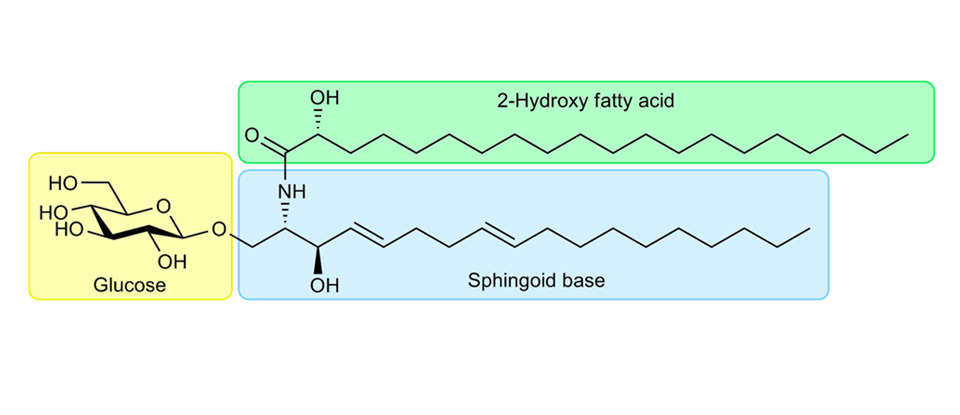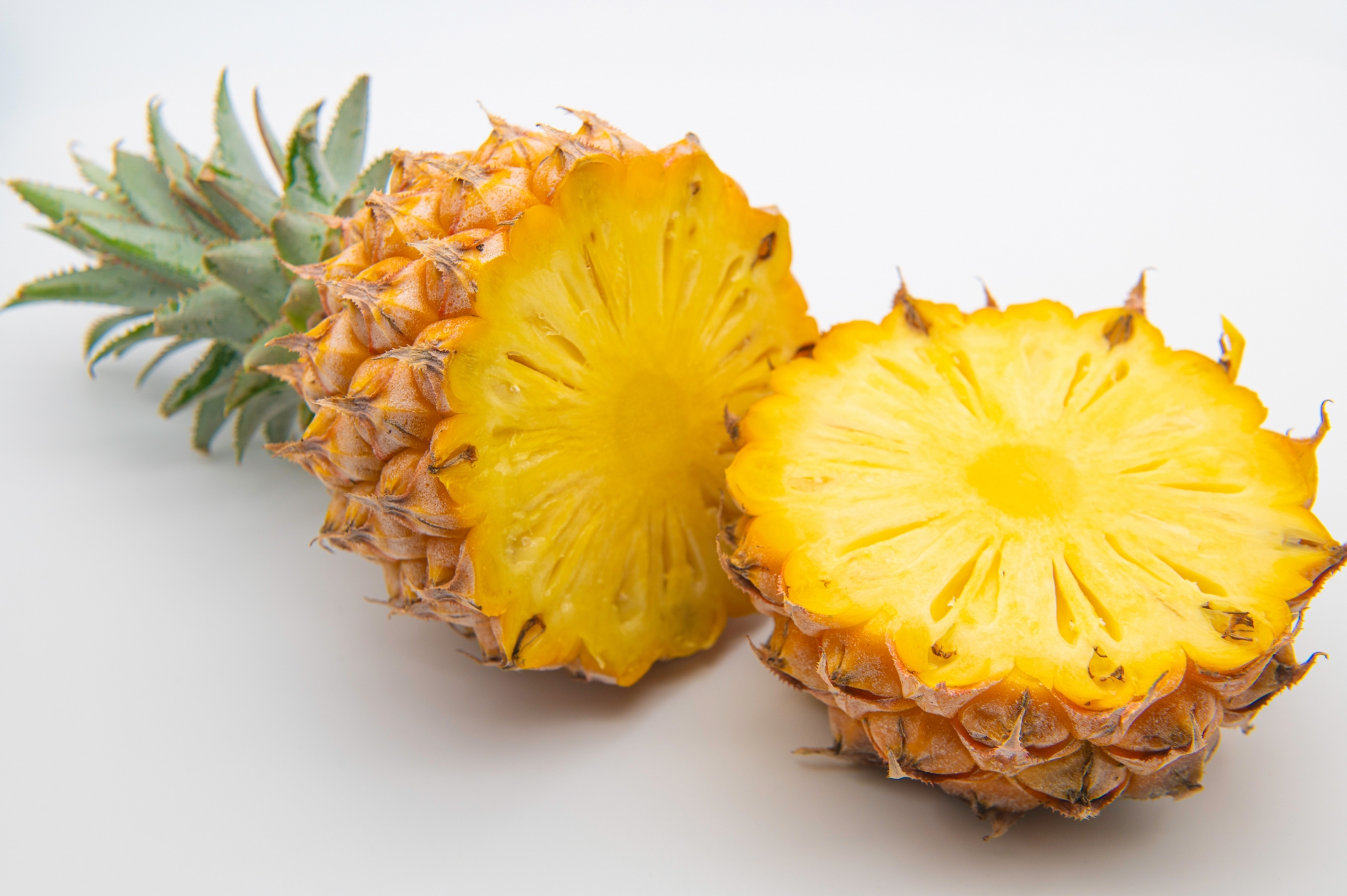Basic Knowledge of Pineapple Ceramide
knowledgeTo begin with, what is ceramide?
The surface of the skin is covered by the stratum corneum, a layer formed from dead epidermal cells. These cells are held together by lipids known as ceramides. Although ceramides are classified as lipids—essentially oily substances—they exhibit the ability to retain moisture within the skin.
Ceramides play an essential role in maintaining the skin’s barrier function and in preserving its moisture content.
Recent studies have shown that the functionality of the skin can be improved through the intake of industrially extracted or synthetically produced ceramides in the form of beauty drinks, as well as through their application as beauty serums.
Ceramides are a type of lipid found in the stratum corneum of the skin and hair. In the skin, they exist as intercellular lipids in the stratum corneum, playing a crucial role in maintaining skin hydration and barrier function. A deficiency in ceramides can lead to a weakened barrier function of the stratum corneum, potentially causing skin issues such as dryness and sensitivity.
Additionally, ceramides are expected to have beneficial effects in improving wrinkles and sagging associated with skin aging. As intercellular lipids in the skin, ceramides possess a barrier function that retains moisture, thereby enhancing the skin’s ability to maintain hydration and preserve its elasticity.
Generally, ceramides decrease with age, which is why they can be supplemented through skincare products and dietary supplements. Ceramides in skincare products are expected to penetrate the stratum corneum and enhance the barrier function. On the other hand, ceramides in supplements are absorbed into the body and are expected to help increase the skin’s moisture retention capacity.

Plant-Derived Glucosylceramides and Pineapple Ceramide
In human skin, seven types of ceramides have been identified, although many more exist due to variations in molecular structure. When a sugar—glucose—is bound to a ceramide, the compound is referred to as a glucosylceramide. Glucosylceramides extracted from plant sources such as rice, corn, soybeans, and konjac root are known as plant-derived glucosylceramides.
Plant-derived ceramides are increasingly recognized as low-irritant, moisturizing ingredients for skin care. In addition to these established benefits, we have turned our attention to pineapple-derived ceramide, known as pineapple ceramide, which has been suggested to possess melanin-suppressing properties.
Plant-derived glucosylceramides and pineapple ceramide are both ceramides extracted from different botanical sources. The following is an overview of the characteristics of each.
【Plant-Derived Glucosylceramides】 Plant-derived glucosylceramides refer to glucosylceramides extracted from sources such as wheat and rice. As a subtype of ceramides, glucosylceramides are a component of the stratum corneum and are known to enhance the skin’s water-retention ability. Among various ceramides, glucosylceramides have one of the smallest molecular weights, which allows them to penetrate the skin more easily. This property enables them to help retain moisture within the skin and prevent dryness.
【Pineapple Ceramide】 Pineapple ceramide refers to ceramides extracted from the fruit of the pineapple. Among its components, it is particularly rich in ceramide AP, which has the effect of enhancing the skin’s ability to retain moisture. In addition, pineapple ceramide contains enzymes that promote skin turnover, supporting the removal of dead skin cells and encouraging the turnover of skin cells.
As mentioned, plant-derived glucosylceramides and pineapple ceramide are ceramides extracted from different plant sources, both of which are known to enhance the skin’s moisture-retention ability. Since both are beneficial for skin health, they are commonly included in skincare products. They are especially recommended for individuals with dry or sensitive skin.

Supervisor

- President
- Born in Gunma Prefecture in 1965, he completed his doctoral studies at the Graduate School of Agricultural Science at Tokyo University of Agriculture (PhD), and served as a special research fellow at the Japan Society for the Promotion of Science, a part-time lecturer at Tokyo University of Agriculture, and an associate professor and professor at Takasaki University of Health and Welfare before becoming a professor at Tokyo University of Agriculture in April 2012. He is a professor at the same graduate school, and will be the president of Tokyo University of Agriculture in April 2021. He will be the chairman of Tokyo University of Agriculture in July 2023.
School he attended
April 1984 - March 1988 Graduated from the Department of Forestry (Forestry Science Course), Faculty of Agriculture, Tokyo University of Agriculture
Degrees he received
Tokyo University of Agriculture - Doctor of Forestry
Career history within the university
April 2012 - Ongoing Professor, Department of Forest Science, Faculty of Regional Environmental Science, Tokyo University of Agriculture
April 2016 - Ongoing Director, Food and Agriculture Museum, Tokyo University of Agriculture (Other organizations)
April 2021 - Ongoing President, Tokyo University of Agriculture
Academic societies and committees he has been affiliated with
April 1985 - Ongoing Japan Wood Research Society
June 1988 - Ongoing Japanese Mushroom Society
April 1995 - Ongoing Japanese Society of Inflammatory and Regenerative Medicine
April 1995 - Ongoing Japanese Society of Bioscience, Biotechnology, and Agricultural Chemistry
May 1995 - Ongoing Applied Pharmacology Research Society
Latest Posts
- November 27, 2025 Functionality of pineapple ceramide Clinical trial: Effects on moisturizing efficacy
- October 30, 2025 Functionality of pineapple ceramide Pineapple Cultivation and Nutritional Value
- September 30, 2025 Functionality of pineapple ceramide Storage Methods and Tips for Maintaining the Freshness of Pineapple
- August 27, 2025 Functionality of pineapple ceramide Mechanisms of Melanin Suppression and Spot Prevention by Pineapple Ceramide
- February 19, 2025 Functionality of pineapple ceramide Possibility of ceramide, a component derived from pineapple

OUTLINE
Supervisor
Message from the Founder
With the growing popularity of Foods for Specified Health Uses and the newly established Functional Labeling Food system by the Consumer Affairs Agency, people are increasingly seeking not only to satisfy hunger and taste but also to achieve health and beauty benefits through food. As someone involved with agricultural products, I have been amazed by the many newly discovered functional components. It was particularly fascinating to find beauty-related components in pineapples, a fruit with a long history of consumption, which no one had expected. I believe that such research achievements should be more widely discussed and further developed.
About the Pineapple Ceramide Research Association
This research association was established to provide a platform for publishing research findings on the functionality of pineapple ceramides and for exchanging information and opinions for further study.
Biography
- Born in 1965 in Gunma Prefecture. Completed the doctoral program at the Graduate School of Agriculture, Tokyo University of Agriculture (Ph.D.). Served as JSPS Research Fellow, part-time lecturer at Tokyo University of Agriculture, associate professor and professor at Takasaki University of Health and Welfare. Appointed as professor at Tokyo University of Agriculture in April 2012 and graduate advisor.
- Appointed President of Tokyo University of Agriculture in April 2021.
- Appointed Chairman of the Board of Trustees in July 2023.
Education
- April 1984 – March 1988: Graduated from the Department of Forestry (Wood Science Course), Faculty of Agriculture, Tokyo University of Agriculture.
Degree
- Ph.D. (Forestry), Tokyo University of Agriculture
Academic Career
- April 2012 – Present: Professor, Department of Forest Science, Faculty of Regional Environmental Science, Tokyo University of Agriculture
- April 2016 – Present: Director, “Museum of Food and Agriculture,” Tokyo University of Agriculture (other affiliated organizations)
- April 2021 – Present: President, Tokyo University of Agriculture










